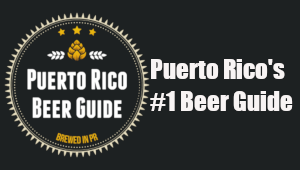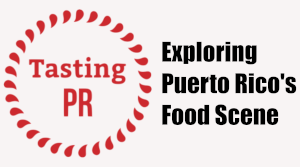 Cast Your Vote and help pick the top 7 Natural Wonders of Puerto Rico. Voting begins March 1 until May 31, 2010
Cast Your Vote and help pick the top 7 Natural Wonders of Puerto Rico. Voting begins March 1 until May 31, 2010
The 7 Natural Wonders of Puerto Rico (las 7 maravillas naturales de Puerto Rico) is local competition to recognize the natural beauty of Puerto Rico and is sponsored by Garnier, Walmart, Amigo Supermarkets and Sam’s Club and endorsed by the Department of Environment and Natural Resources along with the Puerto Rico Tourism Company. The competition uses a similar format to the New Seven Natural Wonders of the World competition that is currently running.
If you are not familiar with the New Seven Natural Wonders of the World, it is a worldwide competition to select 7 new natural wonders and Puerto Rico is represented by the inclusion of the magnificent El Yunque Rainforest. This is a great recognition for the island and if you have not cast your vote, then head over to the New 7 Wonders of Nature now.
OK; back to the 7 Natural Wonders of Puerto Rico. The organizing committee has chosen 19 of the islands best natural areas and you can vote for your favorite 7. At the end of the voting the top 7 choices will be crowned the 7 Natural Wonders of Puerto Rico.
The 19 nominations for the 7 Natural Wonders of Puerto Rico are:
 El Yunque Rainforest
El Yunque Rainforest
One of the most popular areas to visit here in Puerto Rico, El Yunque has been protected by federal law since 1903. It is one of the most diverse forest in the National Forest System with it’s abundance of flora and fauna. El Yunque is also home to 12 species of Puerto Rico’s native coqui frog as well as the endangered Puerto Rican parrot.
Map It
 Cavernas del RÃo Camuy (Rio Camuy Cave)
Cavernas del RÃo Camuy (Rio Camuy Cave)
Here you will find 9 bat species, a 15 mile cave system and the third longest underground river in the world. The main cave at the Rio Camuy Cave Park is Cueva Clara with its huge stalagmite formations.
Map It
 Reserva Natural de la Parguera (Parguera Natural Reserve)
Reserva Natural de la Parguera (Parguera Natural Reserve)
At the Parguera Natural Reserve you will find mangroves, coral reefs and the famous bioluminescent bay. La Parguera is home to around 66 species of bird, fish, molluscs, crustaceans, reptiles and mammals with the coral reef providing shelter and food for the various inhabitants of the reserve
Map It
 Isla de Mona (Mona Island)
Isla de Mona (Mona Island)
The small island located 73.6km from the west coast of Puerto Rico was named after a local tribal chief. The island is approximately 22 square miles and has been designated ecological reserve by the Puerto Rican government and is not permanently inhabited. Mona island has huge 100ft cliffs, extensive coral reefs and four types of forests. Day trips to Mona Island are available.
Map It
 Las Salinas de Cabo Rojo (Cabo Rojo Salt flats)
Las Salinas de Cabo Rojo (Cabo Rojo Salt flats)
Las Salinas de Cabo Rojo has been in operation since 1525 and comprises around 1.249 acres of lagoons, salt marshes, mangroves and dry forest. The area has been listed as a category 1 resource by the US Fish and Wildlife Service. The area serves as the last stop in the northern hemisphere for thousands of birds, before reaching South America in their annual migration
Map It
 Playa Flamenco (Flamenco Beach)
Playa Flamenco (Flamenco Beach)
Located on Culebra Island Flamenco Beach ranks amongst the best beaches in the world for its crystal clear waters and white sand beaches. The beach is hugely popular with locals and visitors and is also one of Puerto Rico’s Blue Flag Beaches.
Map It
RÃo Tanama (Tanama River)
The river rises in the central region of Puerto Rico in the Municipality of Adjuntas and flows northeast through the northern Carso before reaching the Rio Grande de Arecibo. It provides around 22% of the water consumed by the people of Puerto Rico
Cayos de Barca (Barca Keys)
Located in Jobos Bay near Salinas and Guayama, Cayos de Barca consists of seven keys that are protected from private development by the Puerto Rico Government. Here you will find manatee, hawksbill, the bearded crabs and dolphins enjoying themselves in and around the keys.
Map It
Reserva Natural Cano Tiburones (Cano Tiburones Natural Reserve)
This reserve is located close to Arecibo on the north coast of the island and is the largest wetland in Puerto Rico and the fresh water from the karst zone in the north and ocean salt water creates a unique habitat. The reserve plays home to around 206 species of birds, 40 species of fish and 50 species of flora. The
RÃo Guajataca (Guajataca River)
Beginning near the town of Lares at an elevation of around 1,600 feet, the Guajataca River runs for 25 miles before reaching the Arlantic Ocean on the northwest of the island. The river also runs through the Guajataca lake.
 Bosque Seco de Guanica (Guanica Dry Forest)
Bosque Seco de Guanica (Guanica Dry Forest)
The area was designated as a forest reserve in 1919 and is considered the best preserved, subtropical forest and the best example of dry forest in the Caribbean. It is home to around 700 species of plants, of which 48 are endangered. This is a dramatic landscape that is divided by the Bay of Guanica
Map It
El Canon de San Cristobal (San Cristobal Canyon)
San Cristobal Canyon is located between Aibonito and Barranquitas in the heart of the Cordillera Central of Puerto Rico. The canyon is approximately 9Km with cliffs reaching an elevation of 200 meters deep. Here you will find amazing scenery and waterfalls
Map It
BahÃa Bioluminiscente de Vieques (Bioluminescent Bay Vieques)
Vieques Bio Bay or Mosquito Bay is the brightest of the three Bio Bays in Puerto Rico and it has been designated as a critical wildlife area by the Department of Natural Resources.
Map It
La Reserva de las Cabezas de San Juan
Located on the coast of Fajardo, you will find coral reefs, seagrass beds, a dry forest, a rocky coast, beaches and mangrove forests. The reserve is home to two thirds of the reptile and amphibians found in Puerto Rico, including three species of sea turtles. Here you will also find Puerto Rico’s third Bio bay Laguna Grande.
Map It
 Isla de Caja de Muerto
Isla de Caja de Muerto
Located 6 miles off the coast of Ponce on the south side of Puerto Rico, Caja de Muertos consists of , coral reefs, sandy beaches, rocky shores, caves, nesting areas and a xerophytic forest (cacti and thorn bushes).
Map It
 Bosque de Maricao (Maricao Forest)
Bosque de Maricao (Maricao Forest)
The forest is located in the western region of the Cordillera Central of Puerto Rico. Both the Guanajibo River and the RÃo Grande de Anasco flow through the forest and it has the highest plant diversity in the island, with some 1.141 plant species and
Map It
Isla de Gilligan (Gilligan’s Island)
Gilligan’s Island is part of the Cayos de Cana Gorda and is surrounded by the crystal clear Caribbean Sea. Popular with locals and visitors the island can be reached by local boats.
Map It
 Playa la Playuela (Playuela Beach)
Playa la Playuela (Playuela Beach)
Located close to the Cabo Rojo lighthouse the beach is known locally as Playa Sucia and is part of the Boqueron State Forest. From the beach you have a great view of the cabo Rojo Lighthouse perched on the clift top
Map It
Cueva Ventana (Cave Window)
Cueva Ventana is located in the karst area of Arecibo and its elevation allows visitors a breathtaking view of the valley in Arecibo . It is visible from Highway 123 and can also be reached from Highway 10 as well as several side roads leading up to the entrance from Highway 123.
Map It
So there you have your 19 nominations. Which are your favorite 7 and why?
Head over to 7 Natural Wonders of Puerto Rico and cast your votes – Vote HERE
Article Resource: las 7 maravillas naturales de Puerto Rico (Spanish)
Photo Resources using Creative Commons: El Yunque (iamthethird), Camuy Caves (oscalito), Parguera (wiki), Mona Island (paddlepr), Cabo Rojo Salf Flats (oquendo), Flamenco Beach (aawhitaker), Guanica Dry Forest (oquendo), Caja de Merto (wiki), Maricao Forest (wiki), Playuela Beach (oscalito)








